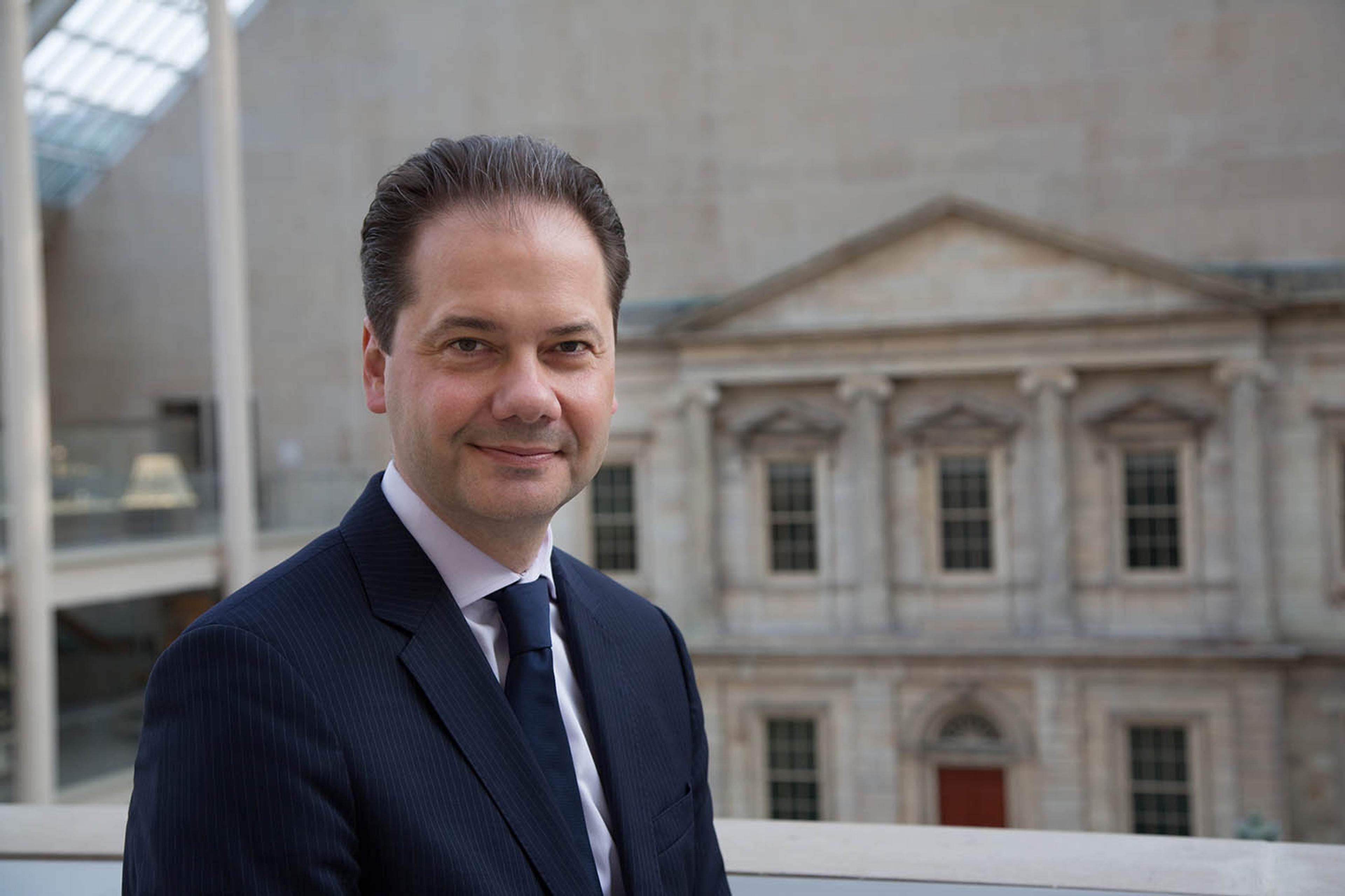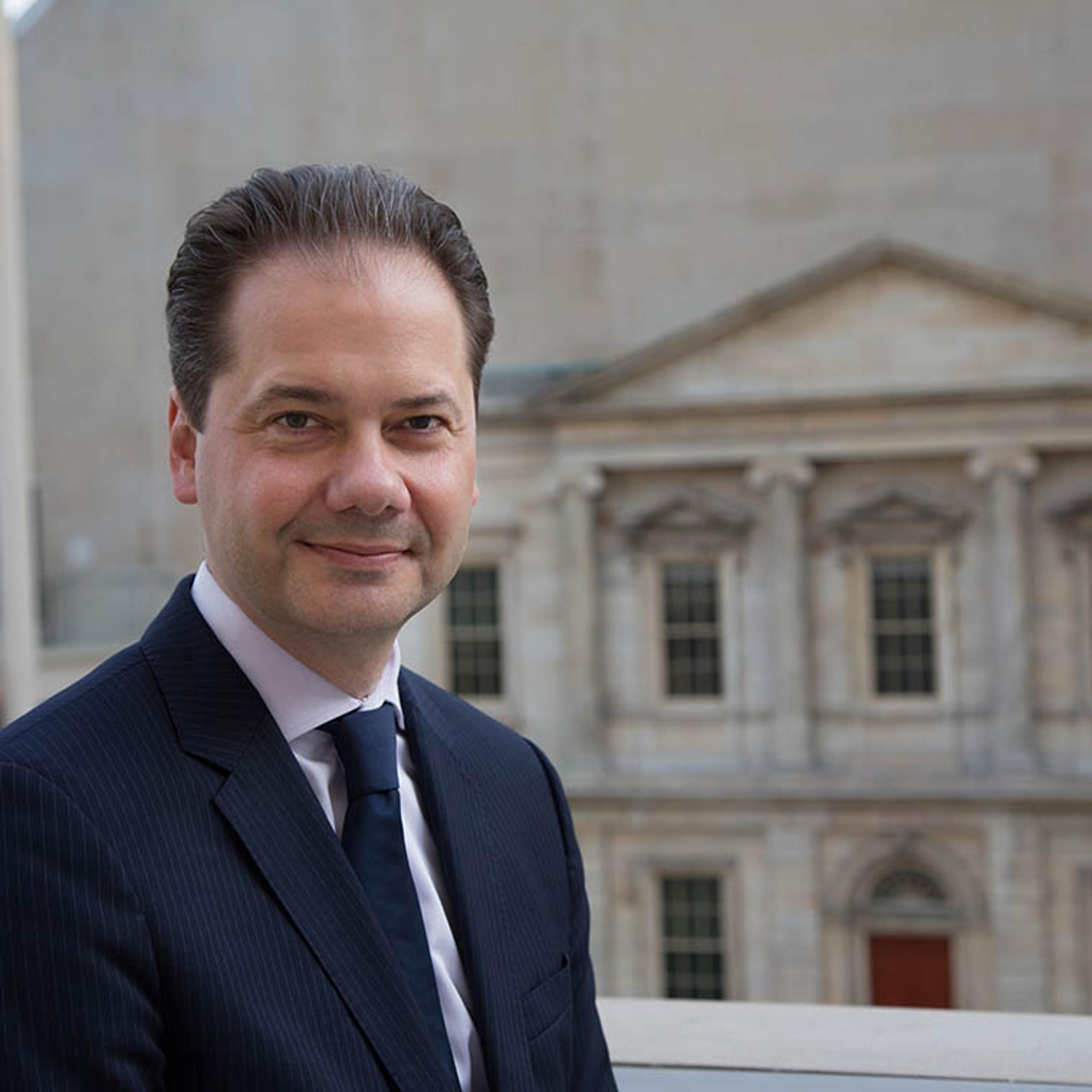Marina Kellen French Director Max Hollein

The Metropolitan Museum of Art was founded by New Yorkers to bring the gift of art and creativity to a growing city, the nation, and the world. Over the last 150 years, The Met has been nurtured by a combination of brilliant staff, generous philanthropy, enlightened civic leadership, and millions of visitors and art lovers from around the world. The Met is held in a public trust, and, accordingly, it is incumbent on me as Director to share how we manage our collection, in particular our approach to acquisitions and deaccessioning.
I appreciate that metmuseum.org’s essay format allows me to present at length our approach, which Met President and CEO Dan Weiss and I shared with staff in recent months. In sum, The Met is considering a policy change that would allow us temporarily to direct funds from deaccession sales to collection care costs, including salaries this year and next. We would still have more than sufficient dedicated endowment funds for acquisition activities during that period, and the amount of our deaccessioning would not be unusually large, yet revenue from these sales, which is traditionally used to purchase art, could instead be devoted toward salaries and other direct collection care costs in light of the historic crisis we face.
The Met collection is among the world’s largest and most encyclopedic, consisting of more than 1.5 million objects spanning 17 curatorial areas that reflect over 5,000 years of human creativity. At the core of the Museum’s mission—indeed, part of the institution’s DNA from its founding in 1870—is that we actively collect in many areas of human creative achievement and in diverse media, dating from the very beginning of artistic practice until the present day. As opposed to many museums that collect more narrowly and with more modest acquisition funds, we have always been an institution that seeks to grow while also practicing active stewardship of our holdings. We collect art to strengthen our collection, enhance the stories we tell, and support the scholarship we pursue, which means that we also deaccession works that are duplicates, redundant, or that are of lesser quality than other examples in the collection. We have always done this.
The Met is perpetually acquiring art. As captured in the recent exhibition Making The Met, 1870–2020, which celebrated our sesquicentennial, the Museum’s collecting priorities have always been shaped by numerous factors, from world events to our evolving cultural and social values. Examples of some of The Met’s priorities in recent years include our dramatic acquisitions in Native American art, works from Latin America and the American South, the first important works of Judaica to enter the collection, as well as Islamic art from Africa and Indonesia. We have also engaged deeply with contemporary art, with an eye to the global arts community. Interestingly, this past year, and in spite of the Covid pandemic, our collections have grown as much as they ever have. As one of the most active museums in the Western hemisphere in terms of collecting, we acquire hundreds of works annually. More than a third of our restricted endowment funds are dedicated to the funding of acquisitions, and all of our 15 collecting departments accept numerous gifts of art each year. Indeed, in observance of our 150th anniversary in 2020, we welcomed 2,500 new works. The coming year will be no different, as we expect to acquire multiple works of art either through funding from endowment proceeds perpetually restricted to acquisitions or from gifts from our wide network of friends and other donor groups.
The Met has always practiced deaccessioning. The Museum approaches deaccessioning with the same degree of strategy and deliberation as we apply to acquisitions. Whereas the two activities are not directly coordinated, our curators are always mindful of the effects of both on the profile of the collection. For example, we recently sold at public auction an eighteenth-century painting by Canaletto, and funds from the sale were eventually dedicated to the purchase of a rare work by a Bohemian master from the fourteenth century. These decisions are recommended by curators, drawing on their deep expertise, and are then reviewed by multiple layers of administration, beginning with the curatorial department heads and then proceeding to the Deputy Director for Collections and Administration, the Director, and for consideration of the Acquisitions Committee of the Board of Trustees before being voted on by the full Board.
The criteria for deaccessioning works in the collection have been consistent for decades and include: (1) the work does not further the mission of the Museum; (2) the work is redundant or a duplicate; (3) the work is of lesser quality than other objects of the same type in the collection; and (4) the work lacks sufficient aesthetic merit or historical importance to warrant retention. The Met deaccessions works annually, resulting in revenue that varies between as little as $45,000 to as much as $25 million, driven by the wide range of values assigned to specific pieces and different media. In recent years, for example, we deaccessioned decorative arts from The American Wing, women’s night and dressing wear from the Costume Institute, and two works from European Paintings. Each object was subject to review by curators and conservators as well as the administrative staff and trustees, as outlined above. This process takes a number of months for each item.
The museum field is working together to navigate this crisis. The museum field has debated whether and how to deaccession art for as long as our institutions have existed. American art institutions have generally abided by the guidelines of the Association of Art Museum Directors (AAMD), which for more than fifty years has stipulated that funds generated from deaccessioning be used solely for acquisitions. The Met wholly supports this approach as active and enthusiastic members of the AAMD community.
As the AAMD has determined, the pandemic represents an existential threat to America’s museums. According to the American Alliance of Museums, nearly 30 percent of museums remain closed, and most will not be able to reopen in the near future. Nearly one-third of the museum directors surveyed confirmed that there was a “significant risk” of closing permanently by next fall, and approximately 30 percent of their staff are currently out of work. These are beloved institutions that have enlivened communities and cultures for decades. It is a loss that will take generations to recover. We at The Met have the great fortune of being a large, stable institution. There has never been a question of whether The Met would survive this historic crisis; we will become stronger and, by necessity, leaner. But as the pandemic now reaches its one-year anniversary, we estimate revenue losses that have grown from $100 to $150 million through June 2021, with larger losses projected in the years ahead, as it will take years until we can expect the full return of tourism revenue. As we address these shortfalls, our first priority will be to preserve the mission of the institution, which also requires preserving the staff as best as we can.
The Met’s roughly $300 million annual budget represents a variety of funding sources and expenditures, with approximately 70 percent of the Museum’s annual budget dedicated to salaries and benefits. To manage this budget, since March we have described to staff and the public the range of efforts we have considered and executed, including the immediate freeze of discretionary spending and hiring following our closure in March, the substantial reduction of our exhibition programming; the creation of an emergency fund from Trustees, which generated more than $25 million; and the redirection of over $25 million in endowment proceeds to offset operating costs. Unfortunately, these necessary measures included staff reductions through a voluntary retirement program and a series of layoffs and furloughs, which reduced our overall head count from about 2,000 to 1,600. Even considering the unforeseeable and uncertain future, it is our intention to avoid, by all means necessary, any further staff reductions.
In response to the duress of its member institutions, the AAMD decided to allow, for the first time, a two-year window in which museums can direct deaccession funds not just to acquisitions but also to pay for costs arising from collection care. I support this temporary measure during this extraordinary time of crisis, as it is our absolute priority and core responsibility to preserve and retain the very skilled staff needed to care for our collection.
A whole range of major American art museums have either already routed deaccessioning funds toward collection care or have deaccessioned works for that purpose. In all cases, this process requires a given institution to align its deaccession policies with the temporary AAMD allowance (which The Met Board will consider next month); to identify, through a thorough process, which existing deaccessioning funds, or works within our deaccessioning process, may be appropriate; and then to decide how it wishes to enter the marketplace. At The Met, our practice is—in an effort to be as transparent as possible—to sell deaccessioned works at public auction following the review process described above.
In all scenarios, our acquisition and deaccession programs will remain roughly consistent with prior years. The Met is now reviewing how to identify works that meet our deaccession standards and how to dedicate the revenues raised from these sales to support the costs of caring for our collection. This process will be slow, deliberative, and public. Over the last decades, annual deaccession programs at The Met have varied based on the number and value of works, with several years averaging around $13 million. While we have not yet decided whether to participate, the scope of our current deaccessioning would not significantly vary from this level given that the total amount of annual collection care salaries and related costs that could be covered is roughly $15 million, per AAMD guidelines. Hence, the only shift will be in how we use the funds from this initiative. We will also still be able to make substantial acquisitions relying on funds generated by the annual restricted endowment, of which we spend on average $50 million a year for works of art. Accordingly, it is possible to engage simultaneously in two sets of activities: to generate very necessary support for salaries dedicated to collection care during this extraordinary crisis, and also to continue with the acquisition activity that makes The Met such a strong collection-focused institution.
The Met has a responsibility to our field and our global community. I take very seriously the impact that our actions have on other institutions. I also realize that others may have different philosophies. It is my professional opinion that a deliberate deaccession program is appropriate, useful, and necessary for an art museum like ours. I also believe that we must face this once-in-a-generation challenge brought by the pandemic by supporting the Museum as a whole, especially its staff, while also taking the long view with regard to what is best for the Museum.
The Met is part of a community that is navigating an historic crisis. I am confident that through our actions we will not only retain the public trust but that it will grow based on how this institution navigates the challenges of the present moment. In doing so, we will successfully steward this magnificent Museum for future generations and in the exceptional service of our many constituencies.
